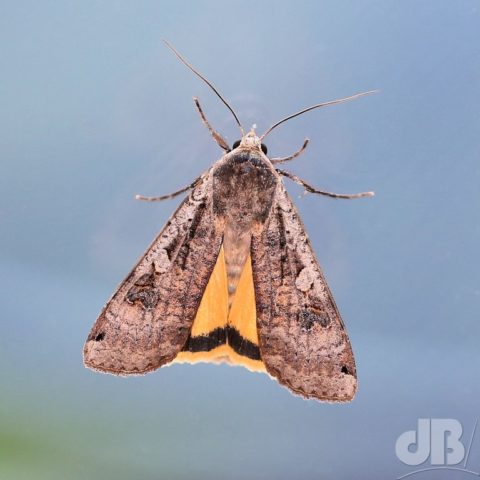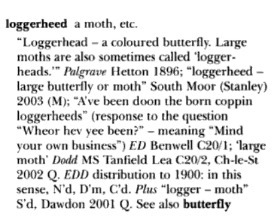The Large Yellow Underwing is the kind of moth we used to call a logger when I was a bairn; Northern dialect word, short for loggerhead. On a warm summer’s evening there would almost always be a logger that would be attracted to a kitchen light and come in through an open window. I must confess I don’t ever remember seeing this species, Noctua pronuba (Linnaeus, 1758), specifically, and certainly don’t recall ever noticing any big moths that revealed brightly coloured hindwings when they were startled or fly. Like most people, until they learn, it’s assumed butterflies are colourful and moths are all brown, grey and dowdy. Simply not true.

Anyway, I’ve more than made up for any childhood failings in terms of moth observation over the last year or so. This summer alone I have caught and released more than 1000 moths of just this one species in my scientific trap, the peak was 148 specimens on the night of 26th August 2019. I’ve recorded their numbers and occasionally photographed them along with more than 300 other species of Lepidoptera (the word means scaly winged and also applies to the butterflies, which are really just a type of moth, anyway, there’s only any real distinction made in British English, because of the bipolar nature of our language with its Germanic and Latinate roots).
Anyway, I wanted to know the etymology of logger/loggerhead. Obviously, there’s the whaling term referring to a large post at the prow of a whaling vessel around which the harpoon rope would be slung to hold fast the catch. There are loggerhead turtles and the word is sometimes used to refer to a foolish person, someone thick as two short planks, and apparently, tadpoles.
Bill Griffith in his Dictionary of North East Dialect (Northumbria University Press, 2nd edn 2005). Refers to a logger as being a coloured butterfly. And mentions that it might also be used to refer to moths. He quotes its usage:
A've been doon the born coppin loggerheads
A literal translation from the Geordie would be: I have been to the burn looking at coloured butterflies/moths. But, figuratively it is a way of responding to the question “Wheor hev yee been?” (Where have you been?) with a curt “Mind your own business!”.
